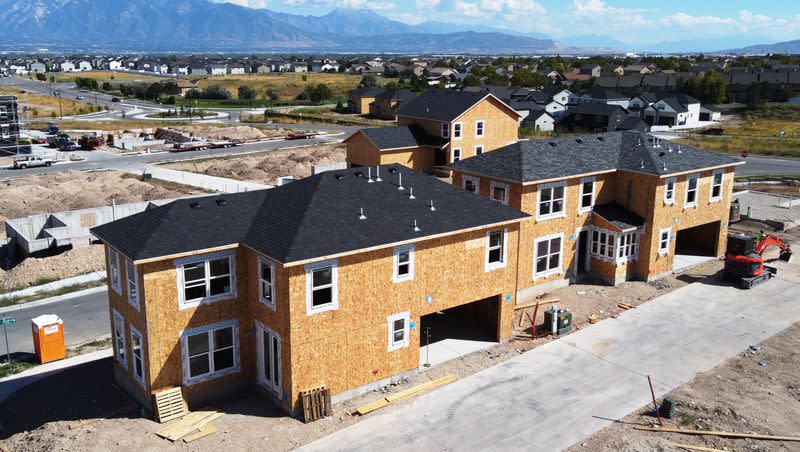How does today’s housing market look next to the 2006 housing bubble?

Sixteen years after the mid-2000s housing bubble popped and sent the global economy spiraling into the Great Recession, a new Goldman Sachs analysis looks back on the historic housing crash and asks the question of today’s housing market: How long can it last?
Even though the real estate market and the broader economy are healthier than they were when the bubble popped in 2007, there is one key factor that’s worse off: affordability.
“While housing and more generally consumer fundamentals are in a much stronger position today, affordability for the incremental buyer is worse than it was at the peak in 2006 before the crash,” Roger Ashworth, managing director at Goldman Sachs, wrote in a credit strategy paper this past week.
U.S. home prices are predicted to continue to rise slowly even amid today’s interest rate exceeding 7%. It will take more than high rates to break that trend.
Related
For the U.S. to see any major price declines, something would need to rattle the larger economy to lead to job losses or a surge in home listings, according to Ashworth.
“Absent any negative shocks to the broader economy that would either boost excess supply of homes on the market or fuel an uptick in unemployment,” he wrote, home prices are expected to continue to rise slowly.
Home prices will rise by 1.8% by the end of the year, and continue growing by 3.5% by the end of 2024, Ashworth predicted.
Is the housing market going to crash?
Amid a national housing shortage — which is especially sharp in the West’s rapidly growing states like Utah and Idaho — it would take a dramatic shock to create enough supply.
The housing market’s inventory has taken a nosedive as would-be sellers remain locked in at low, 3% rates they took advantage of during the pandemic housing rush. Meanwhile, foreclosures remain low and the job market remains strong as the Federal Reserve continues to grapple with record inflation.
Just like any other consumer sector, the housing market is subject to simple supply and demand mechanics, Ashworth wrote, but “perhaps further compounded by the fact that home purchases are also influenced by the supply and demand for financing.”
Related
Looking back at what happened from 2004 to 2009, Ashworth noted the supply of U.S. homes started growing in mid-2005 while “home price appreciation slowed eventually to a negative year-over-year growth rate by mid-2007, ultimately reaching the most negative run rate by late 2008.”
“Only when months’ supply of homes dropped did home price depreciation recover,” Ashworth wrote. “The current low home inventory could help explain why home prices appear to be resilient despite the challenging affordability environment we find ourselves in.”
Another factor that led to the mid-2000s housing crash was a subprime mortgage crisis, which fueled synthetic demand for housing. Not only was the supply of homes high, but “there was also a buildup in ‘shadow’ inventory of homes of borrowers facing foreclosure even before job losses started,” Ashworth wrote.
“And then, as non-farm payrolls shifted into materially negative territory, home prices were pushed to the depths as lending markets seized and borrower demand fell,” he wrote.
Related
Today, “we see few of the same issues that contributed” to the home price crash that preceded the Great Recession, Ashworth wrote, “but affordability from high interest rates remains a key area of concern.”
Still, affordability concerns are “generally offset by very limited supply of homes for sale and the fact that many mortgage borrowers have far lower fixed rates than the current ~7%, 30-year fixed rate mortgage,” he wrote. “We continue to hold the view that home prices are not on the brink of collapse despite current interest rates; instead we project them to slowly rise.”
Even though borrowers are stretching to get into a home relative to their income, Goldman Sachs economists also predict a roughly 3% real income growth next year that could alleviate debt-to-income ratios, according to Ashworth’s paper.
“Absent a broader economic shock,” he concluded, “we expect this trend of stable home prices to continue.”
Related

